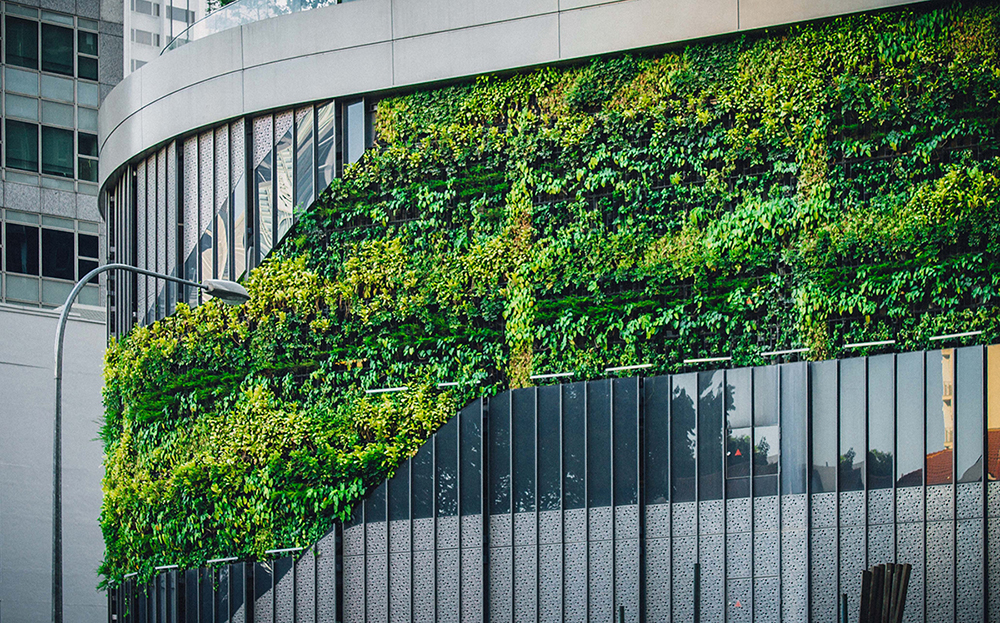How can we create new perspectives? How can we stimulate hope, creativity, and innovation? And how can we address what is by far the most serious crisis for our planet, the one that has not stopped because of the pandemic, and I am talking, of course, of the climate crisis?
These are some of the statements that resonated when hearing the speech of the President of the European Commission Ursula von der Leyen during the New European Bauhaus Conference held on the 22nd and 23rd April. During this Conference, the European Commission inaugurated the New European Bauhaus Initiative (NEB), by gathering thousands of participants online. Set up to bring out ideas from the civil society, the NEB Initiative is aimed at supporting the realisation of the European Green Deal, to consolidate an ecological movement in the fields of culture, technology, architecture, and construction, and draw inspiration from the historical movement of the early 19th century.
By bringing together personalities from diverse backgrounds, the Initiative is aimed at accelerating the European transition to an ecologically conscious economy. This is particularly essential in the building sector, which accounts for 40% of the Union’s CO2 emissions. How can culture help to solve the climate crisis? How can we recycle buildings? And how can architecture participate in democracy for a sustainable Europe? All these questions led the talks during the NEB Conference held last week. Many noted that sustainability is the new beauty: it is all about empowering people, and combining sustainability with style.
As you may have noted from earlier posts on our website, the NEB is a flagship project under the European Green Deal for a sustainable green transformation in housing, architecture, transportation, urban, and rural spaces as part of its effort to reach carbon neutrality by 2050. It is divided into three stages: the Design Phase, the Delivery Phase, and the Diffusion phase. During the NEB conference, the NEB prizes were presented. The first NEB prizes will showcase good practices, examples, and concepts that clearly illustrate the NEB values of sustainability, aesthetics, and inclusion. The prizes range from EUR 15,000 to 30,000, and include a communication package which includes paid media promotion, such as the production of a documentary.
These examples can be either (i) new ideas or concepts, referred to as ‘New European Bauhaus Rising Stars’, for those concepts submitted by younger talents (limited to under 30s), or (ii) existing examples referred to as the ‘New European Bauhaus Awards’ (open for all ages) both of which ultimately complement the European Green Deal’s New European Bauhaus movement.
The New European Bauhaus Awards
The first competition strand is devoted to existing examples of projects. These projects must have already been completed at the time of the application. However, these projects do not necessarily have to have a physical manifestation in the form of a building or a material product. For certain categories, they can also take the shape of implemented methodologies or processes, such as, for instance, education models or cultural projects.
”"With the New European Bauhaus, we want to make the European Green Deal tangible and 'palpable'. We want to add a cultural dimension to the economic and technological transformation," EU Commission president Ursula von der Leyen
The New European Bauhaus Rising Stars
As stated earlier, this is open for younger talent aged 30 or younger. The concepts/ideas under this strand can be at different stages of development from the early concepts to prototype level, and should be presented with a development plan, outlining planned steps to further develop, promote and/or implement the concept or idea with a particular focus on the year following the application.
There are ten different categories in which the widest variety possible of creative and forward-thinking people, groups and organisations could participate. These are the following:
- Techniques, materials and processes for construction and design;
- Building in a spirit of circularity;
- Solutions for the co-evolution of build environment and nature;
- Regenerated urban and rural spaces;
- Products and lifestyle;
- Preserved and transformed cultural heritage;
- Reinvented places to meet and share;
- Mobilisation of culture, arts and communities;
- Modular, adaptable, and mobile living solutions; and
- Interdisciplinary educational models.
Can I apply? What about the prize packages?
Both EU and non-EU nationals can apply for the NEB Prizes, as long as the projects or ideas are developed or located in the European Union. Partnerships and consortia are equally allowed.
The winners in each category and each strand will receive a monetary amount (one winner per category in each strand) as follows:
- €30,000 for winners of the New European Bauhaus Awards, and
- €15,000 for winners of the New European Bauhaus Rising Stars.
All winners will receive a communication package.
The deadline for the NEB Prizes submissions is 31st May 2021, and may be submitted here. In addition to the above, towards Autumn of this year, the European Commission will launch its call for the first five NEB pilot projects. It will include a seed funding of 25 million euros and the possibility to combine this with money from structural funds.
Showcasing Maltese talent
The NEB for Malta would be a perfect opportunity to explore what green architecture can do to our way of living. We envisage that our local talent, be it artists, architects, engineers, or other thought-leaders, can utilise the benefits that this movement brings with it, including but not limited to funding opportunities to see projects come to life. Over the years there has been a lot of talk about innovative projects, but they have not seen the light of day – such as the renovation of the old opera house in Valletta, or the St. Anne’s Street pedestrianisation proposal. Now, with the NEB movement, it is the perfect time for these projects to come to fruition.






